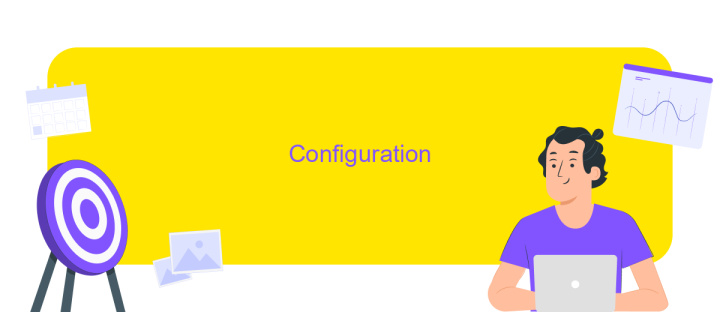Kafka Connector API
The Kafka Connector API is a powerful tool designed to simplify data integration between Apache Kafka and various data sources or sinks. By providing a scalable and reliable framework, it enables seamless data streaming and processing across diverse systems. This article explores the key features, benefits, and practical applications of the Kafka Connector API, offering insights into how it enhances real-time data workflows and supports efficient data management.
Introduction
The Kafka Connector API is a powerful framework designed to streamline the integration of Apache Kafka with various data sources and sinks. It simplifies the process of building and managing scalable and reliable data pipelines by providing a common interface for connecting Kafka with external systems. This API is crucial for organizations that need to handle large volumes of data efficiently, ensuring seamless data flow across diverse platforms.
- Facilitates easy integration with external systems.
- Supports both source and sink connectors for data ingestion and dissemination.
- Enables scalable and fault-tolerant data pipelines.
- Reduces the complexity of managing data streams.
- Offers a wide range of pre-built connectors for popular systems.
By leveraging the Kafka Connector API, developers can focus on building robust data-driven applications without worrying about the intricacies of data movement. It abstracts the complexities of data integration, allowing teams to concentrate on deriving insights and building value from their data. As a result, the Kafka Connector API is an essential tool for modern data architecture, enabling efficient and reliable data operations.
Connector Architecture

The Kafka Connector Architecture is designed to facilitate seamless data integration between Apache Kafka and various data systems. At its core, the architecture comprises two main components: Source Connectors and Sink Connectors. Source Connectors are responsible for pulling data from external systems into Kafka topics, while Sink Connectors push data from Kafka topics to external systems. This modular design allows for flexible and scalable data pipelines, ensuring that data can flow smoothly between different platforms without manual intervention.
To simplify the setup and management of these integrations, services like ApiX-Drive can be utilized. ApiX-Drive offers a user-friendly interface for configuring and monitoring data flows, reducing the complexity associated with managing multiple connectors. By leveraging such services, organizations can streamline their data integration processes, ensuring real-time data availability and enhancing operational efficiency. The Kafka Connector API, combined with tools like ApiX-Drive, empowers businesses to build robust data ecosystems, adapting quickly to changing data needs and supporting diverse data-driven applications.
Configuration

Kafka Connector API provides a robust framework for integrating various data sources and sinks with Apache Kafka. Proper configuration of connectors is crucial to ensure optimal performance and reliability. Each connector requires a set of configurations that define how it interacts with Kafka and the external systems. These configurations can be specified in a properties file or through a REST API.
- Connector Class: Specify the fully qualified class name of the connector.
- Tasks Max: Define the maximum number of tasks that should be created for this connector.
- Topics: List the topics that the connector will read from or write to.
- Key Converter: Set the converter class for key data serialization and deserialization.
- Value Converter: Set the converter class for value data serialization and deserialization.
- Offset Storage: Configure where the connector will store offsets.
After setting up these configurations, deploy the connector using Kafka Connect. It's essential to monitor the connector's performance and adjust configurations as necessary to handle changes in data volume or system load. Properly configured connectors ensure seamless data flow between Kafka and external systems, enhancing the overall data pipeline's efficiency.
Integrations

Apache Kafka Connector API offers seamless integration capabilities, enabling users to easily connect Kafka with various data sources and sinks. This flexibility allows businesses to streamline their data pipelines, ensuring efficient data flow across different systems. By leveraging Kafka Connect, organizations can harness the power of real-time data processing while maintaining data integrity and consistency.
One of the key advantages of using Kafka Connect is its ability to integrate with a wide range of existing technologies. This extensibility is achieved through a vast ecosystem of connectors, which are pre-built plugins that facilitate data movement between Kafka and other systems. As a result, teams can focus on deriving insights from data rather than worrying about the complexities of integration.
- Database connectors for systems like MySQL, PostgreSQL, and Oracle
- Cloud storage connectors for platforms such as AWS S3 and Google Cloud Storage
- Messaging system connectors for services like MQTT and RabbitMQ
- Data processing connectors for tools like Apache Hadoop and Apache Spark
By utilizing Kafka Connect's robust integration capabilities, organizations can achieve a unified data architecture. This allows for scalable, reliable, and efficient data operations, enabling businesses to respond swiftly to changing market demands and make data-driven decisions with confidence.
Best Practices
When implementing Kafka Connector API, it's essential to prioritize proper configuration and resource allocation. Ensure that your connectors are configured to handle the expected data load, and regularly monitor their performance to prevent bottlenecks. It's also crucial to allocate sufficient resources, such as CPU and memory, to avoid performance degradation. Regularly update connectors to leverage new features and security patches, maintaining an optimal and secure integration environment.
For seamless integration, consider using services like ApiX-Drive, which can simplify the connection between Kafka and other applications. ApiX-Drive provides an intuitive interface to set up and manage your integrations without extensive coding knowledge. This allows you to focus on optimizing data flow and ensuring reliability. Additionally, implement robust error-handling mechanisms and logging to quickly identify and resolve issues. By following these best practices, you can enhance the efficiency and reliability of your Kafka Connector API deployments, leading to more robust data processing pipelines.
FAQ
What is Kafka Connector API used for?
How do Kafka Connectors work?
What are the key components of Kafka Connect?
How can I automate the integration of Kafka with other applications?
What are the benefits of using Kafka Connect API?
Do you want to achieve your goals in business, career and life faster and better? Do it with ApiX-Drive – a tool that will remove a significant part of the routine from workflows and free up additional time to achieve your goals. Test the capabilities of Apix-Drive for free – see for yourself the effectiveness of the tool.

